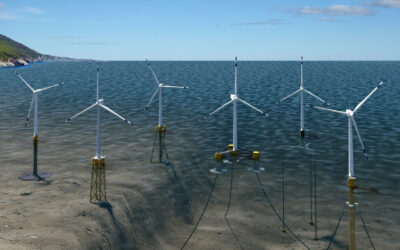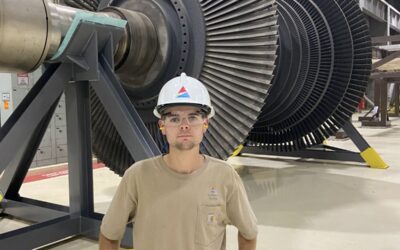Universities are at the nexus of innovation and research as they prepare the next generation of our workforce and entrepreneurs. Increasingly, this workforce will be defined by our clean energy transition. Academic programs across the country are preparing students for jobs in nuclear energy, which provides clean, around-the-clock energy and high-paying, long-lasting jobs.
Today, the U.S. nuclear energy sector directly employs nearly 100,000 people. The supply chain—including fuel, manufacturing, and maintenance—supports four times that many jobs. These high-paying jobs anchor careers and communities.
Nuclear’s key role in the fight for energy security and against climate change is becoming even more apparent, and demand for new advanced nuclear reactors continues to grow. Nuclear technology is American technology, with more innovators and entrepreneurs than any other county. To build the next generation of nuclear here, we need to continue to invest in the people who will make it a reality.
On a visit to the University of Illinois at Urbana-Champaign, U.S. Secretary of Energy Jennifer Granholm said, “Nuclear energy is clean energy and it’s vital to creating good-paying jobs, supporting our energy transition, and saving our planet.
“Here at the University of Illinois you’re doing research along with the labs, Fermi, Argonne, etc. on next generation nuclear … that next generation nuclear whether it is fission or fusion is a huge part of the nation’s future.”
We have entered a new era of nuclear technologies, and the research being done at test reactors in academic institutions is catalyzing the next generation of nuclear.
For example, Abilene Christian University’s NEXT Lab in Texas specializes in molten salt reactors as a way to provide global solutions to the world’s need for energy, fresh water and medical isotopes while educating future leaders in nuclear science and engineering.
Many other academic programs, such as Kansas State University’s TRIGA Mark II nuclear reactor facility, are pursuing new nuclear technologies while also training licensed undergraduate students to operate reactors, providing both an excellent opportunity for the students and also supporting the workforce needs of the local nuclear power industry.
Universities are also looking to nuclear power to meet their long-term energy needs. Recently, Purdue University and Duke Energy announced that they plan to jointly explore the feasibility of using advanced nuclear energy to reach a carbon-free future for its campus.
“No other option holds as much potential to provide reliable, adequate electric power with zero carbon emissions,” said Purdue President Mitch Daniels. “Innovation and new ideas are at the core of what we do at Purdue, and that includes searching for ways to minimize the use of fossil fuels while still providing carbon-free, reliable, and affordable energy.”
With all the momentum we are seeing in the states, at the federal level and in the private sector, it’s never been a better time to specialize in nuclear energy. Currently, Texas A&M University, Penn State University and Oregon State University produce the highest number of Bachelor of Science nuclear engineering graduates. To continue to explore academic programs, visit the Nuclear Engineering Department Heads Organization.
Companies such as Duke Energy are supporting scholarships to increase diversity in the nuclear energy pipeline. They donated $150,000 this year to the nuclear engineering program at South Carolina State, which was named one of the 25 best values in America by Best Value Schools and is the only four-year nuclear engineering degree offered by a historically Black college and university (HBCU).
There are also two-year degree programs that build the necessary skills for careers in radiation protection, nuclear equipment technicians, power plant operations, and more.
A clean energy future requires a workforce to build and grow. A just energy transition means bringing jobs into communities while propelling the United States to a green economy. Nuclear energy is poised to do just that, demonstrating the critical role universities play in our carbon-free future by innovating next-generation technologies and training our clean energy workforce.
This post originally appeared on Nuclear Energy Institute’s blog.




